Salvage Industry Showed Signs of Recovery in 2024
The International Salvage Union (ISU) has released its annual statistics for 2024, revealing a modest recovery in the salvage industry compared to past years with gross revenue for ISU members...
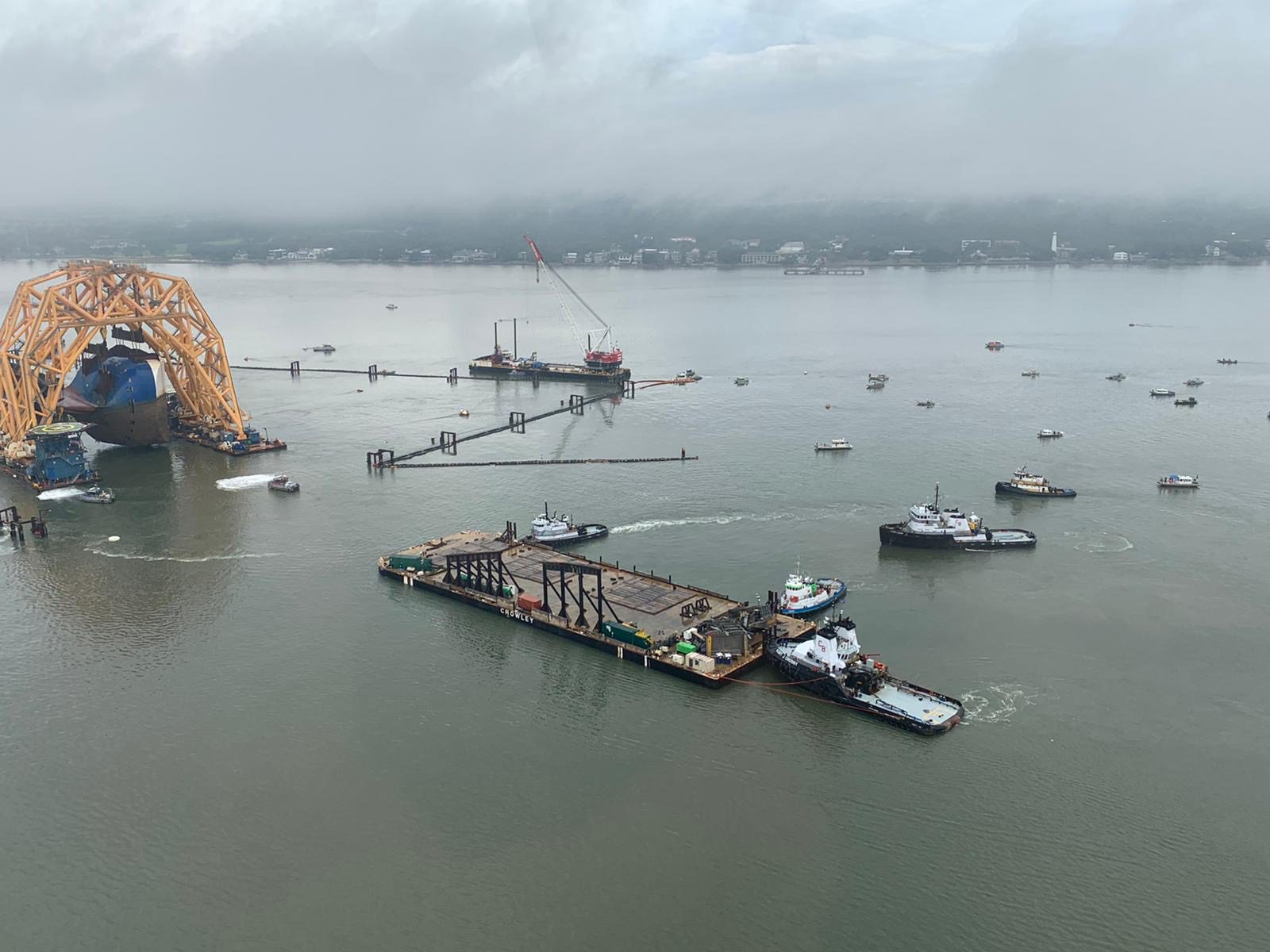
Crews have finished cutting and lifting the first section of the wreck of the Golden Ray, marking a major milestone in the wreck removal project.
Preparations are now underway for the section to be transported by barge.
In total, the Golden Ray will be cut into eight sections for removal. Section One comprises the wreck’s bow. Below is what the wreck looked like when the VB10000, which is performing the cutting and lifting, arrived in late October:
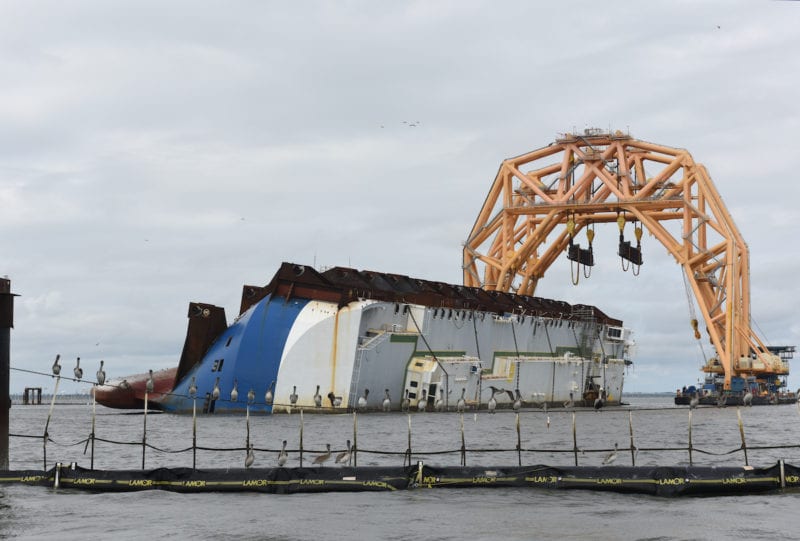
“This is our first major milestone in the removal operation. We validated the overall removal method while we continue to refine our strategies to increase the efficiency of the next six cuts” said Commander Efren Lopez, U.S. Coast Guard Federal On-Scene Coordinator.
Environmental monitoring is an on-going effort.
“Responders on the shore and on the water have vigilantly kept watch for and responded to any environmental impacts. We encourage the public to continue reporting any debris they encounter through the Debris Reporting Hotline and online form,” Commander Lopez said.
The Golden Ray was carrying about 4,200 vehicles when it lost stability and grounded in St. Simons Sound in Georgia as it departed the Port of Brunswick in September 2019. All vehicles remain inside the ship’s cargo holds and are being cut along with the wreck’s hull.
The VB-10000 crew lifts Section One of the Golden Ray wreck while the Barge JULIE B enters the EPB. Response vessels move in formation to quickly mitigate any oil and debris that may escape the EPB.
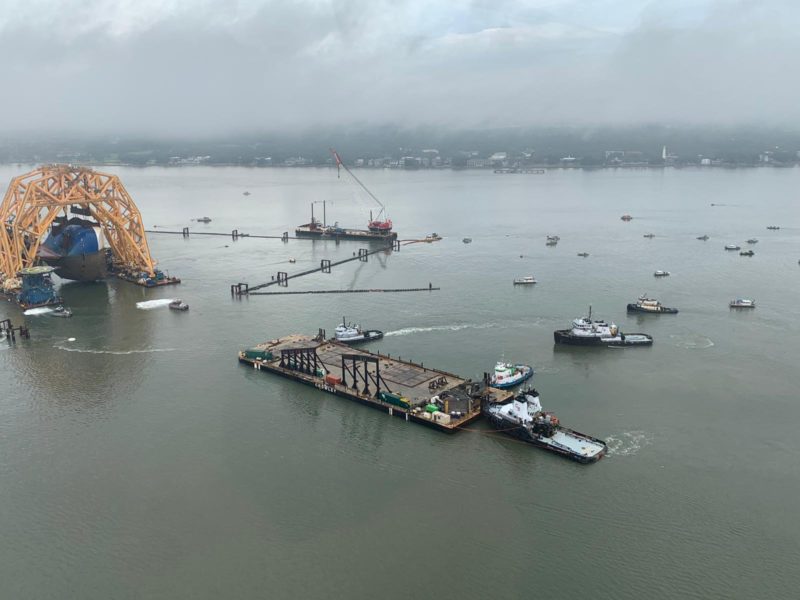
Responders lift Section One of the Golden Ray wreck using ultra-high-molecular-weight polyethylene slings that are as strong as steel at a fraction of the weight.

Responders lift Section One of the Golden Ray wreck as the Barge JULIE B maneuvers into place below the section.
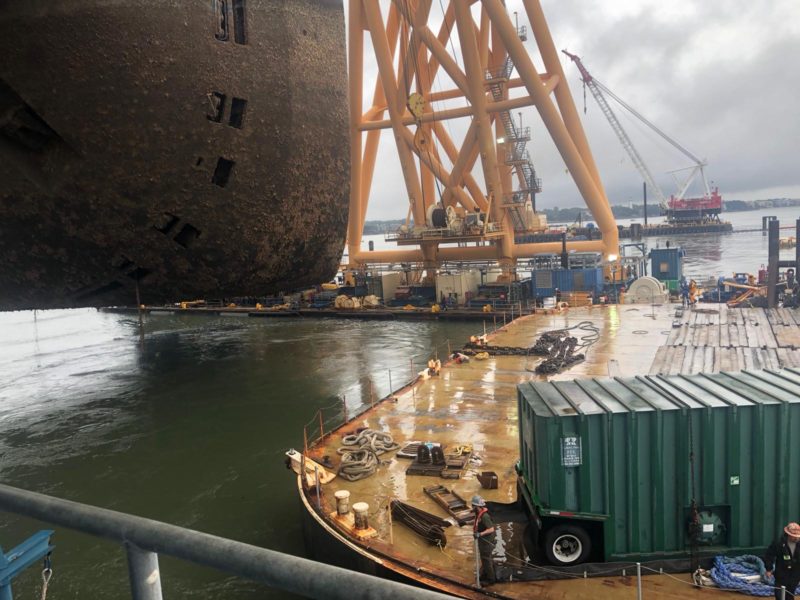
After separating the section from the remaining wreck, the VB-10000 moved to a predetermined position for the JULIE B to transit underneath to receive the section. The wreck is surrounded by an environmental protection barrier with netting to the seafloor designed to catch large debris for removal. If you look closely, you can see the vehicles that remain inside the ship.
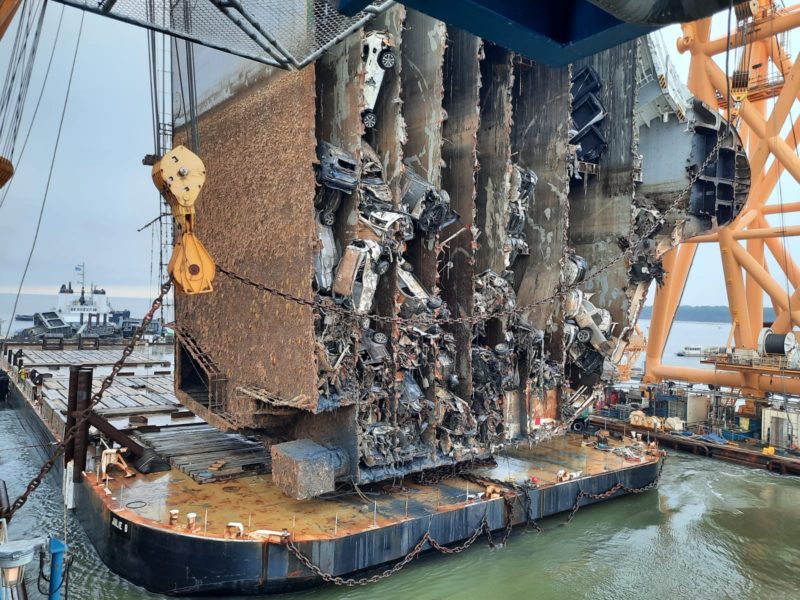
The Barge JULIE B is outfitted with custom fabricated cradles that match the profile of Section One with precision.
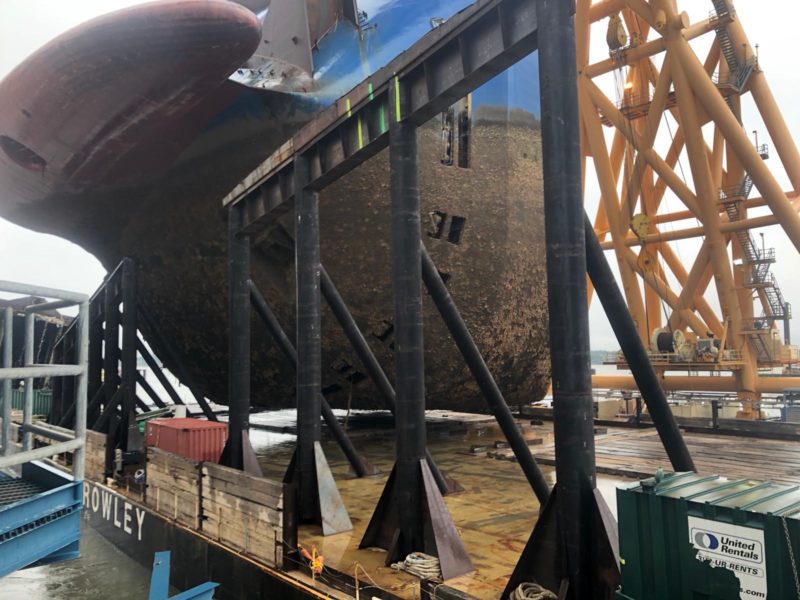
The JULIE B transits underneath Section One of the Golden Ray wreck. Engineers accounted for approximately 6,000 metric tons of load which includes the dry weight and projected sediment contained within the section during the lift.
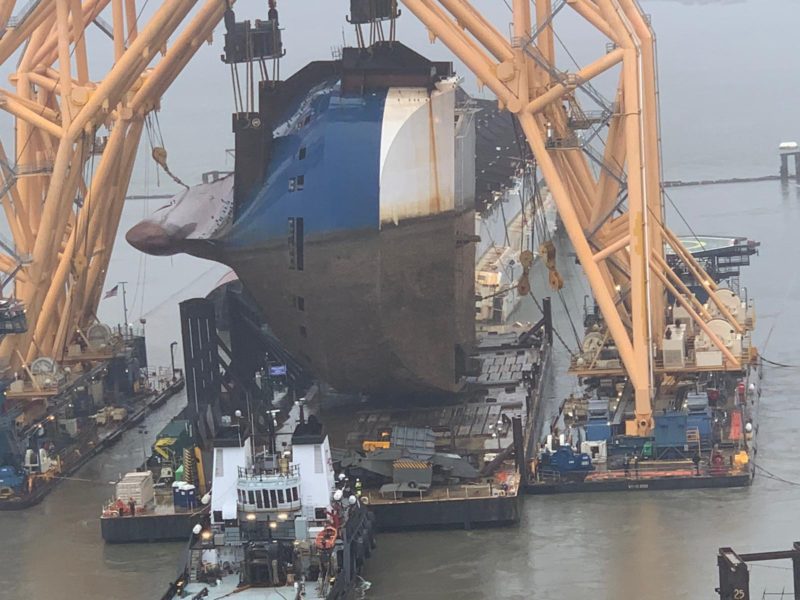
Responders will secure the section to the JULIE B and prepare the barge to exit the EPB.
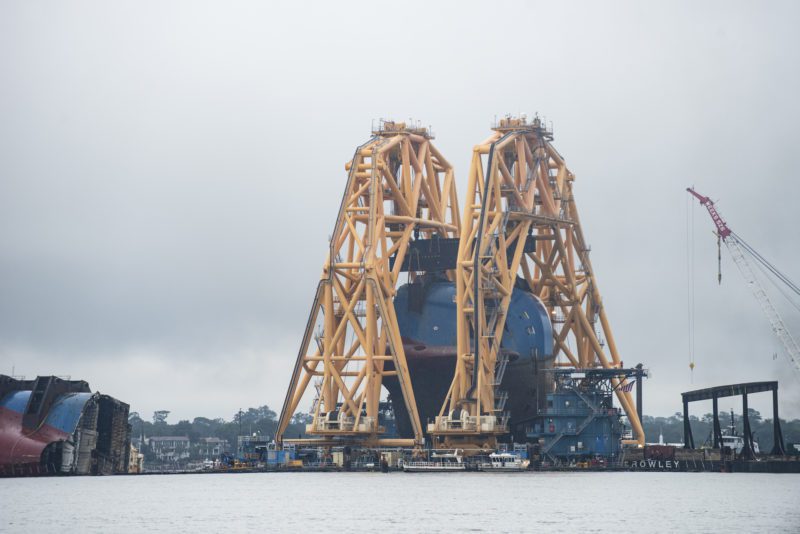
In total, there will be eight sections (seven cuts) that will need to removed in a similar manner.
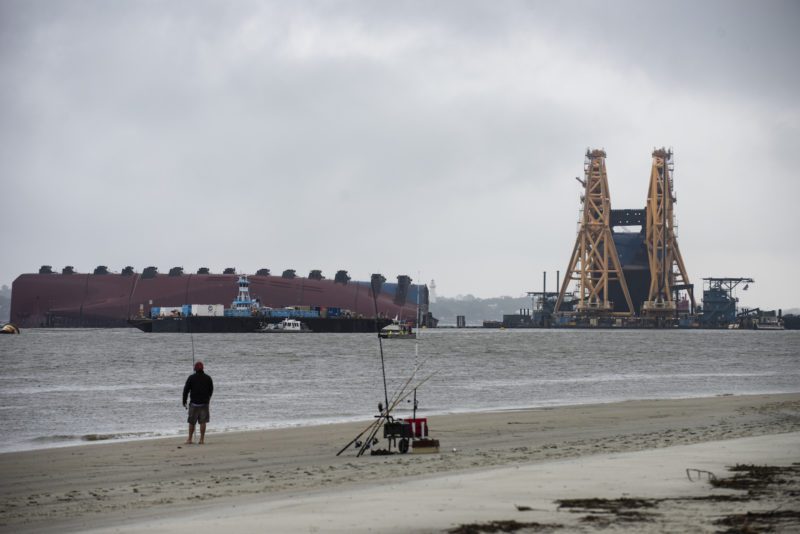
Update: Section One has now exited the Environmental Protection Barrier and is being moved to a local site on the East River for sea-fastening.
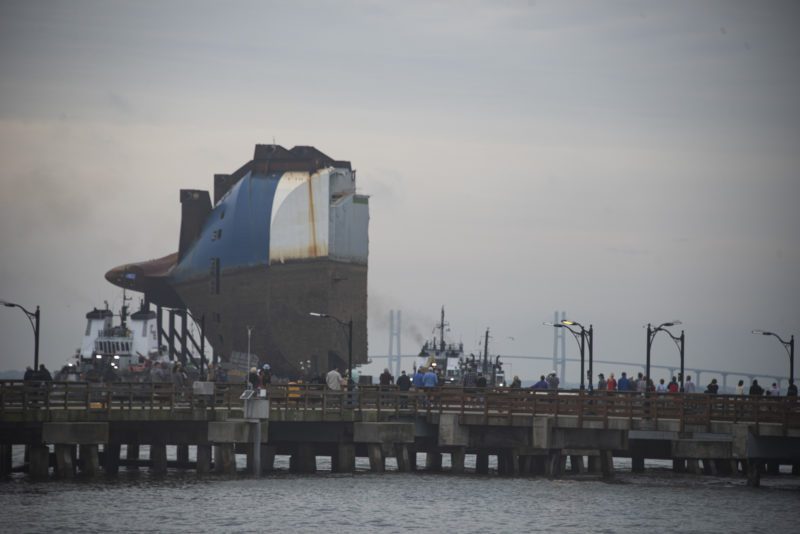
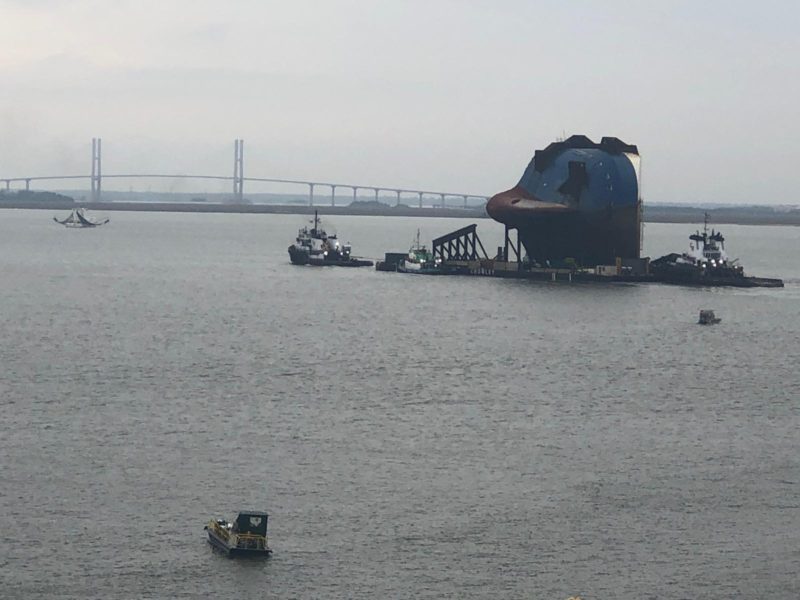

Subscribe to gCaptain Daily and stay informed with the latest global maritime and offshore news


Stay informed with the latest maritime and offshore news, delivered daily straight to your inbox
Essential news coupled with the finest maritime content sourced from across the globe.
Sign Up